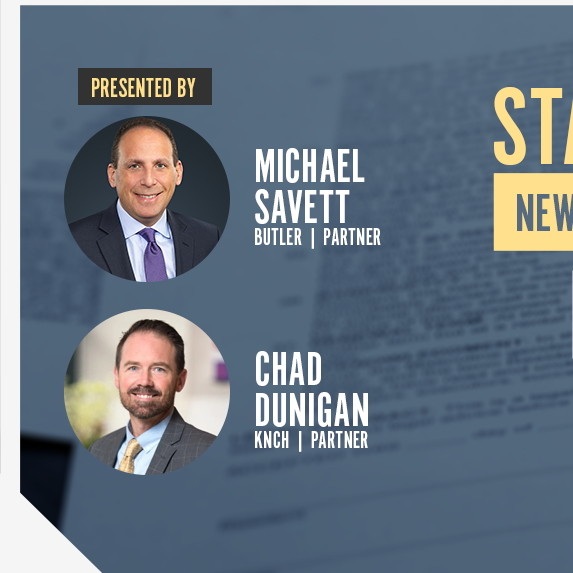
Perspectives On The Ali Restatement: The Plain Meaning Rule Or Presumption?
June 20, 2018
This article is originally a publication of The National Insurance Law Forum, June 2018. Legal opinions may vary when based on subtle factual differences. All rights reserved.
The American Law Institute (ALI) voted to approve the Restatement of the Law of Liability Insurance (Restatement) at its annual meeting on Tuesday, May 22, 2018, with sections of the Restatement being debated until the final vote.[1] The debate had resulted in many different drafts of the Restatement, with the Council of Advisors to the Restatement Reporters approving Proposed Final Draft No. 2 on April 13, 2018.[2] This was the version ultimately approved by the ALI Members during the annual meeting.[3]
One of the more controversial issues regarding policy language interpretation had been the proposed use of a “plain meaning presumption,” rather than the majority “plain meaning” rule. Though the Restatement ultimately adopts the plain meaning rule, the Comment to Section 3 continues to advocate a contextual approach utilizing custom, practice, or usage, implicating the plain meaning presumption.
The Comment to Section 3 begins with a discussion of two opposing approaches to the interpretation of insurance policy language found in the common law of insurance: the “contextual approach,” and the “plain meaning rule.” Under the contextual approach, courts interpret insurance policy terms in light of all the circumstances surrounding the drafting, negotiation, and performance of the insurance policy.[4]This approach was adopted in the Restatement Second of Contracts. Under the plain meaning rule, if a term is unambiguous when applied to the claim in question and in the context of the entire policy, the term is interpreted according to that meaning.[5] This approach has been adopted by a substantial majority of courts in insurance cases.[6] In adopting the plain meaning rule, the Restatement recognizes there is value in the rule’s incentivizing the use of policy terms having a plain meaning, and its promotion of the consistent interpretation of similar terms, which leads to more uniform enforcement of standardized policies.[7]
Comment b to Section 3 addresses “sources of plain meaning,” including dictionaries, court decisions, statutes and regulations, and secondary legal authority such as treatises and law review articles.[8]Noting such sources of meaning “are not ‘extrinsic evidence’ under any definition of that term,” the Restatement presents them as “legal authorities” consulted by the courts when determining the plain meaning of an insurance policy term.”[9]
Likening them to the sources of plain meaning, Comment c asserts “custom, practice, and usage” can inform the court’s determination of the objective meaning of insurance policy terms “in the relevant market.”[10] Distinguishing them from other sources of meaning, such as drafting history, course of dealing, or pre-contractual negotiations (characterized as evidence of the “specific” or “subjective” intent of a particular party), Comment c concludes the use of custom, practice, and usage would not “open the door to extrinsic evidence.”[11] Comment c asserts the use of these sources would be limited to when a party can reasonably be charged with knowledge of the particular custom, practice, or usage.[12] Expecting each party to be knowledgeable in its own trade and business, Comment c anticipates that the costs to consider custom, practice, and usage will be low.[13] Thus, Comment c concludes that when custom, practice, and usage can be discerned from public sources and with limited discovery, it is the better approach.[14]
Comment d permits courts applying the plain meaning rule to utilize the sources of plain meaning described in Comment b, as well as custom, practice, and usage sources of Comment c, to determine whether a term is ambiguous.[15] Similarly, Comment e permits the court to determine the term’s purpose based upon its context in the policy, in conjunction with the sources of meaning set forth in Comments b and c, to assist in determining whether a term is ambiguous.[16] Only after a term is determined to be ambiguous may the court consider extrinsic evidence of meaning such as pre-contractual negotiations or course of dealing.[17]
Comment h asserts the plain meaning rule adopted by Section 3 is “broadly consistent with the principle that insurance policy terms are to be interpreted according to the reasonable expectations of the insured, provided that the understanding of what makes an expectation ‘reasonable’ incorporates the concept of plain meaning.”[18] Though Comment h does not detail how it would work, incorporating the plain meaning rule into a contextual analysis echoes the plain meaning presumption abandoned by earlier drafts of the Restatement.
The “plain meaning presumption” was a hybrid approach to policy interpretation that relied upon the plain meaning of the provision unless extrinsic evidence established the policyholder’s interpretation was more reasonable, as follows:
An insurance policy is interpreted according to its plain meaning, if any, unless extrinsic evidence shows that a reasonable person in the policyholder’s position would give the term a different meaning. That different meaning must be more reasonable than the plain meaning in light of the extrinsic evidence, and it must be a meaning to which the language of the term is reasonably susceptible.[19]
The presumption did not give rise to a factual question. Rather, it was the framework for the court’s interpretation of the policy language at issue:
In other words, for the plain meaning to be displaced, the court must conclude that the plain meaning is a less reasonable meaning. If, after considering the extrinsic evidence, the court cannot determine which interpretation is more reasonable in the circumstances, the plain meaning of the term prevails. This presumption in favor of the plain meaning is not a factual presumption, because interpretation of the term is a question of law. The presumption therefore does not refer to a burden of proof, which pertains only to factual issues. Rather, the presumption in favor of the plain meaning is a rule of decision that defines the deference that courts should give the plain meaning of insurance policy terms.[20]
The presumption in favor of plain meaning represented a clear departure from the current state of the law governing policy interpretation. Indeed, an earlier draft of the Restatement acknowledged that the presumption did not follow the plain meaning rule or the contextual approach.[21] Instead, as indicated by Comment h, the presumption reflects an expansion of the “reasonable expectations” doctrine. Under this doctrine, the insured’s expectation as to the scope of coverage is upheld provided that such expectations are objectively reasonable.[22] The analysis of the insured’s expectations, according to both the presumption and Comment h, would incorporate the concept of plain meaning.
How much influence is ultimately exerted by the contextual approach advocated by the Comment to Section 3 will depend in large part upon where it is asserted, and the state of the law governing policy interpretation in that jurisdiction. For instance, a court applying Florida law may reject the application of the contextual approach based upon the Florida Supreme Court’s rejection of the reasonable expectations doctrine in Deni Associates of Florida, Inc. v. State Farm Fire & Cas. Ins. Co.[23]
In Deni, the Court declined to adopt the doctrine, finding “[t]here is no need for it if the policy provisions are ambiguous because in Florida ambiguities are construed against the insurer. To apply the doctrine to an unambiguous provision would be to rewrite the contract and the basis upon which the premiums are charged.”[24] The Court also noted:
The Florida Department of Insurance categorically opposes the adoption of the doctrine of reasonable expectations. According to its answer brief: “Adopting the reasonable expectations doctrine will negate the traditional construction guidelines and create greater uncertainty. This Court should not resort to the reasonable expectations doctrine because it will only spawn more litigation to determine the parties’ expectations.”[25]
Ultimately, the Court rejected the doctrine, concluding that an interpretation of an insurance policy based upon a determination as to whether the insured’s subjective expectations are reasonable, can only lead to uncertainty and unnecessary litigation.[26]



